I'm having a bit of trouble figuring out the Big O run time for the two set of code samples where the iterations depend on outside loops. I have a basic understanding of the Big O run times and I can figure out the run times for simpler code samples. I'm not too sure how some lines are affecting the run time.
I would consider this first one O(n^2). However, I'm not certain.
for(i = 1; i < n; i++){
for(j = 1000/i; j > 0; j--){ <--Not sure if this is still O(n)
arr[j]++; /* THIS LINE */
}
}
I'm a bit more lost with this one. O(n^3) possibly O(n^2)?
for(i = 0; i < n; i++){
for(j = i; j < n; j++){
while( j<n ){
arr[i] += arr[j]; /* THIS LINE */
j++;
}
}
}
I found this post and I applied this to the first code sample but I'm still unsure about the second. What is the Big-O of a nested loop, where number of iterations in the inner loop is determined by the current iteration of the outer loop?





